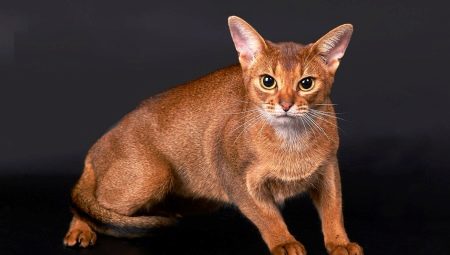Hearing the phrase "Abyssinian cat", many immediately mentally transferred to Ancient Egypt, full of figures of female goddesses with cat faces. Graceful figurines of graceful cats are sold today in any souvenir shop of the country of pyramids. Abyssinian cats are very beautiful, sunny, elegant. Seeing them once, it is impossible not to want to get such a pet for yourself.
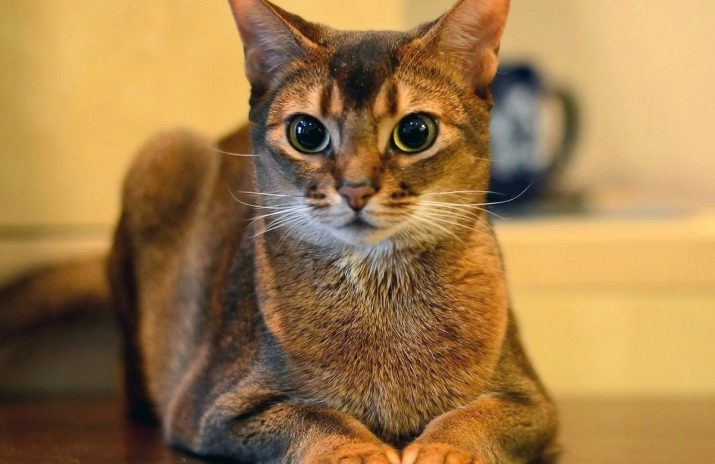
Origin history
The pedigree of the oldest cat breed on earth is shrouded in myths and legends. According to one of them, the king of Abyssinia presented a cat, similar to a Barbary lion, to the Egyptian pharaoh. At first glance, he fell in love with this small animal with a royal posture and an outlandish appearance.
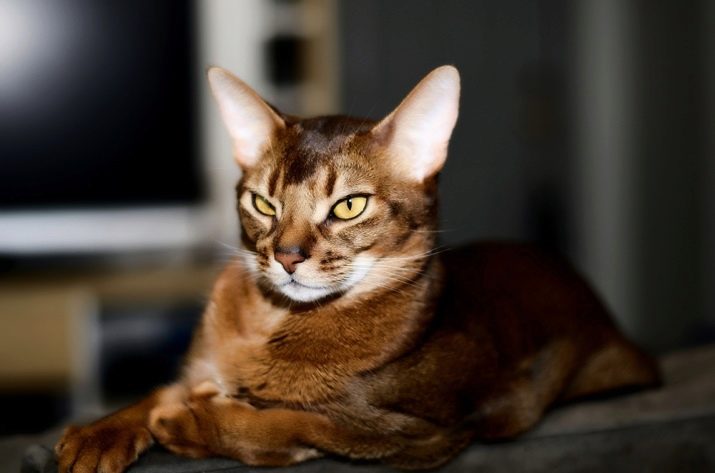
Possessing divine plasticity, harmoniously folded, this cat was smart and smart, and, most importantly, she loved people very much.
Since then, only close relatives of the pharaohs were allowed to have them. Cats were sacred. They were likened to the sun god Ra and the goddess of love Bast, famous for its beauty. They protected divine papyrus from mice in libraries, and the "mustachioed guard" was patronized by cat police so that the Greeks could not steal any of the country's treasures. The conquest of Egypt by the Roman Empire helped these animals gain the sympathy of the inhabitants of all of Europe.
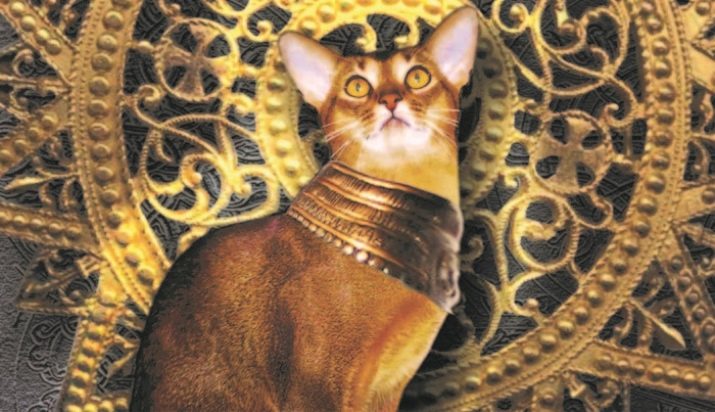
According to another version, in 1868, after the end of the Ethiopian war, the military commanders of the royal army took home several individuals. Versions about the sex of these animals are controversial.It is known for certain that the ancestor of all the Abyssinians was an animal named Zula, named after the port where the expeditionary force was stationed.
There are several versions about the owner of the animal. One of them says that his name was Robert Napier. Various sources call him either Marshal and Lord, then captain of fortification, or naval engineer. Others, referring to the archival documents of this company, claim that Robert Napier conducted a punitive expedition to Abyssinia - this is the unofficial name of the Federal Democratic Republic of Ethiopia, found in modern literature, from where the phrase "Abyssinian cat" came from.
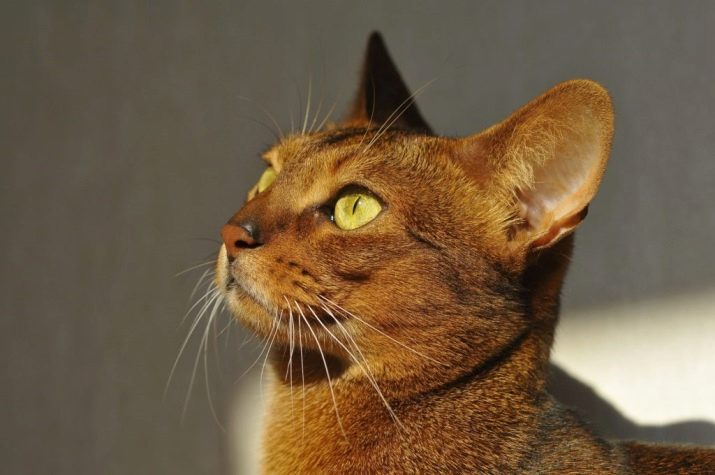
The landing point of Zula was under the protectorate of the Egyptians. The handicap blew up in the battle, and it completely burned down. The commander was granted the knightly rank. At the beginning of July 1868, he embarked on a warship loaded with victorious prey, but without an animal.
According to another version, one of the captains of this ship was carrying his wife, Mrs. Barrett-Lennard, who carried in the basket an animal named Zula, which is considered the ancestor of all Abyssinians. She registered the animal in the studbook of England, where since the end of the 18th century data on racehorses, like a rabbit cat or a rabbit cat, have been recorded. At that time, no one had heard of the Abyssinian breed. Individuals of that tribe had significant differences with the modern appearance of cats, judging by the lithography.
Although this, apparently, is one of the legends. No written evidence and archives of this family have been preserved. Some sources claim that it was a cat, while others insist on a version of the cat. Others believe that it was a kitten, but the exact information of which sex was this particular animal was not preserved. There are documents confirming the version of the existence of Robert Napier. About the offspring of the cat, and who recorded it, there is no evidence. Information that he was involved in breeding is also missing.
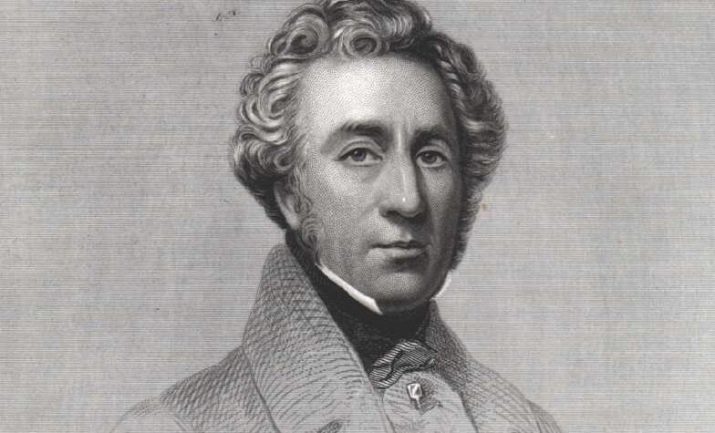
Despite this tradition, the Egyptian version of the origin of the breed became very popular in England.. At the first London cat show of 1872 in the history of England, in Crystal Palace, the Abyssinian handsome man got the third place, which attracted the attention of society. In January of the following year, Harper`s Weekly, blessing this event, named the winner an Abyssinian cat. This was the first printed mention of abi. Ten years later, the club of cat lovers of England recognized the existence of this breed and officially registered it.

Some experts in feline standards are confident that English breeders have developed an Abyssinian look based on local indigenous feline breeds. The latter do not have the tabby color characteristic of the Abyssinians, but occasionally completely striped hairless kittens appear in the local striped and motley cats.
In 1907, two representatives of the silver color were taken to America. The Great Depression, and then the Second World War, nullified the efforts of breeders. The livestock could be restored only after the end of the war. The official registration of the litter occurred in 1935.
The development of the Abyssinians on the continents was parallel, so their appearance was slightly different. European cats had a more squat and massive skeleton, ears were medium-sized and straight, their head was rounded, and their hair was slightly elongated. The American had more subtle body curves, the back was slightly curved in the shape of an arc, the cats had a chiseled neck and large ears wide apart.
The first Abyssinian was brought to Russia in 1994, but the breed became known after 1998. A Moscow breeder brought in an abyssinian girl in beige colors, and two years later she bought an blue Abyssinian. With these individuals, the Russian population of Abyssinians began. Abi females are more valued because boys predominate in the litter. Girls are born 3-4 times less often.
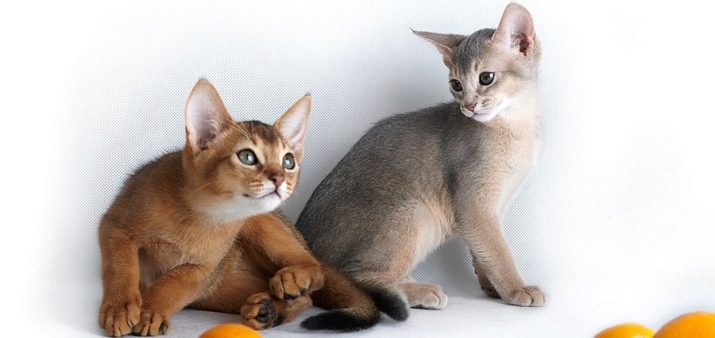
Description
Abyssinians grow to medium size. According to the CFA standard, the basic requirements are proportionality and grace. This is a prominent animal of small size, regal posture, flexible, and with developed muscles. Has a keen look, thoughtful and wise. Cats are sociable, nimble, unpretentious, friends with children and other animals in the house.
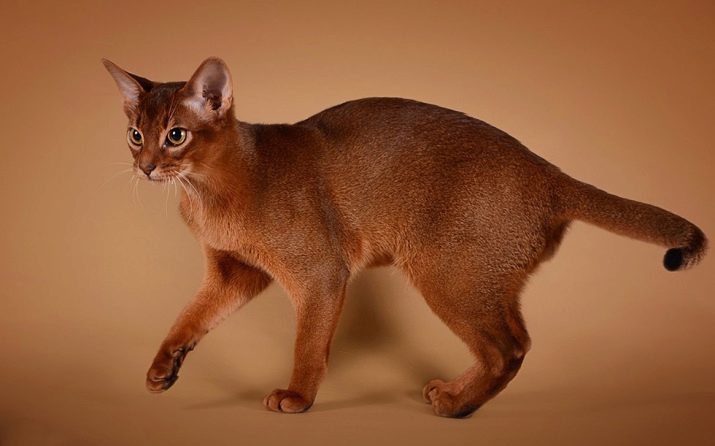
The characteristics that formed it will help determine the breed.
- Animals weigh from 4 to 7 kg, and cats are larger and heavier than cats.
- Girls at the withers up to 28 centimeters, boys - up to 32 centimeters.
- The head is in the form of a slightly rounded wedge, with a soft line of cheeks and eyebrows. A slightly convex and wide forehead smoothly flows into the top of the head and neck, the neck is elegant, short, curved.
- The ears are massive, with moderate sharpening and darkening at the tips, expanding at the base, they take a cup-shaped contour. Some individuals have pointed ears with tassels at the tips.
- The eyes are large, almond-shaped, shiny, with a thoughtful look. The hair around the eyes is light, along the contour there is a dark line, like eyeliner for women. The iris is juicy, dominated by golden tones, yellow with an orange tint, amber, walnut, sometimes light green. All kittens have blue eyes.
- The body is elastic, graceful, medium in length, with well-developed muscles that do not burden it. The proportions are perfect.
- The limbs are lean and elegant. The paws are small, oval in shape.
- The long tail tapers to the tip, and at the base it is noticeably thickened.
- Thick hair is pressed to the body, shines brightly. The color resembles the sands of Egypt and Ethiopia. The texture is silk, springy under the fingers and plentiful, light undercoat. Several ticking lines (alternating color) run along the length. On each wool, each other is replaced by light and dark shades.
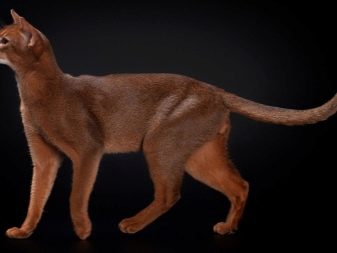
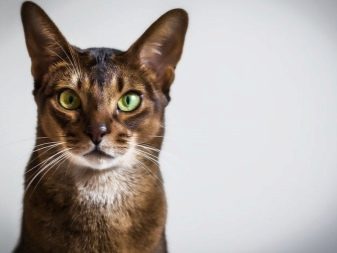
Character
Abi are active and moving cats. Even lying on the couch, they carefully observe what is happening around. Their habits are reminiscent of canine, as cats are energetic, agile and playful. These are purposeful, curious and initiative animals, but at the same time tactful and attentive. Very sociable and smart, have a good memory.
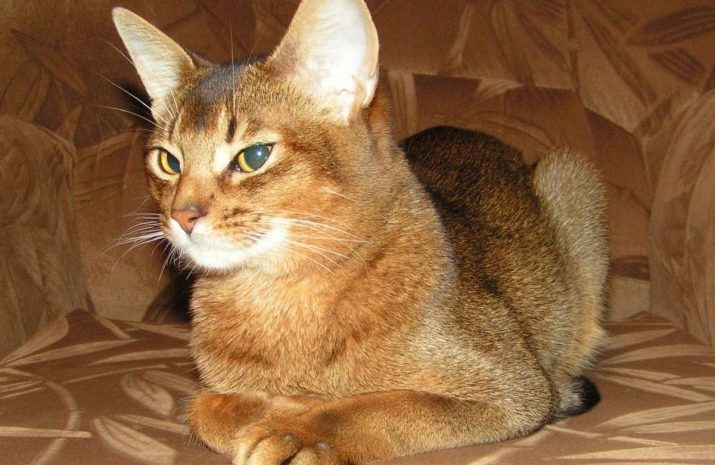
They are attached to the owners and love praise very much. They are well trained and need constant communication. Curious, they always stick their spouts to examine and open everything. It is better to close lockers and shelves, otherwise they will pull everything out. They are not afraid of water, they are easy to bathe. Rare specimens can splash around in a basin or bath. Very clean.

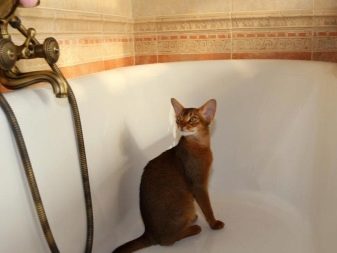
Before old age, they are ready to play with the owners: run for feathers or bring objects thrown by them. You can take for walks and travel. They like to move at altitude, jump on shelves, cabinets, explore corners, sweeping away all obstacles along the way. They choose the main owner - the one who often plays and communicates with them. Love him the most.


If there is a baby in the family who squeezes the animal, the cat does not release its claws, realizing its tender age, but does not forget the insult and eschews the child. Abyssinians communicate well with dogs, but immediately make it clear who is in charge. Birds and hamsters evoke hunting instincts. With proper upbringing, cats react to the word "no." They can be easily accustomed to the tray and scratching post. The voice of the Abyssinians is sweet, quiet and thin, like a bell, does not cause irritation. They like to purr, especially when meeting with the owner.
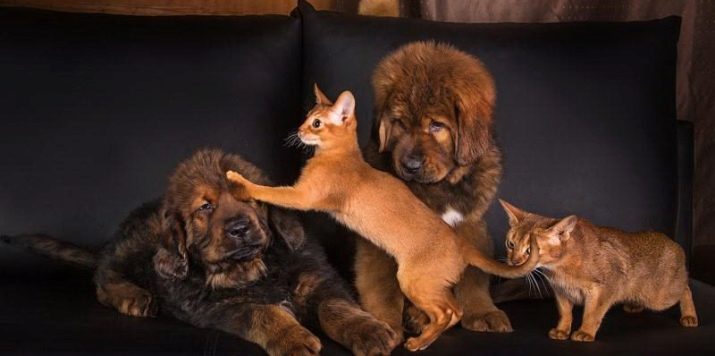
They do not spoil things out of mischief, they always have a motive: research, hunting or protection.
Problems with mustachioed friends are a continuation of their character.
- They need increased attention due to hyperactivity. Kittens are raised from an early age, constantly adjusting their behavior. Attempts to scratch your hands, bite, jump on people from a height, climb onto the table are nipped, sprinkling water into the muzzle from the spray bottle and fixing it with a forbidding word.
- Subconsciously, at the genetic level, they do not like objects like snakes, they are afraid of harsh sounds. Males during puberty become aggressive due to hormonal changes.Not supporters of hugs, but if they want, they themselves will go for a portion of affection and attention, and will receive them as much as they want.
- Allergic, so you need to individually select the food and care products. Some owners complain that cats do not drink from their bowls, but are looking for alternative sources: lick all the taps in the apartment, sit in the sink, drink from the toilet, because predators do not drink near the place where they eat. After a long absence, the owner pursues him throughout the house, chatting with himself, creating sound support for all actions. During games, she likes to jump to the ceiling, and can play for days.
- Well-fixed mosquito nets are required on the windows, because cats endlessly prey on insects. They may not jump to it and fall out of the window.


How many cats live?
The average duration of an Abyssinian is 12-15 years, depending on heredity. The psychological factor also influences - animals are like dogs, very affectionate, and with high intelligence. They are sensitive to attitude, value care, affection, love. If this is not enough, they can begin to hurt.
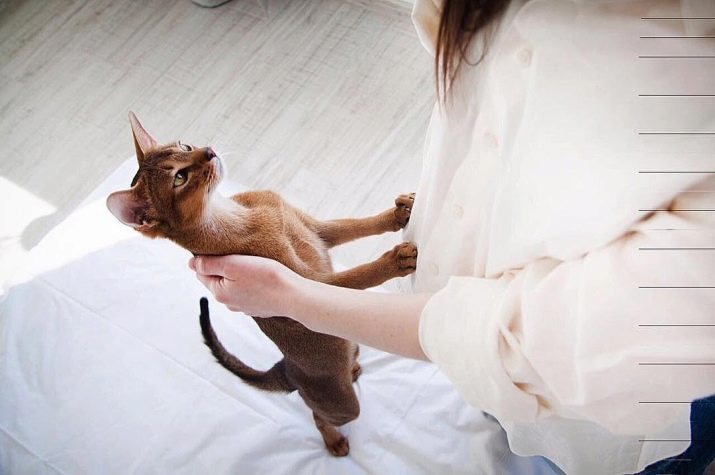
With proper care and a balanced diet, good living conditions and timely veterinary care, life expectancy increases to 20 years.
Color options
Thoroughbred Abyssinians have a warm and glowing coat color, multi-colored stripes on the hairs flow into each other, merging into one pattern, overflow. The abdomen, the inside of the legs, sides and chest are colored evenly. A darkened “strap” passes through the entire spine, passing to the tail. These parts do not have any patterns or inclusions. A dark shade at the tips of the ears and tail is welcome.
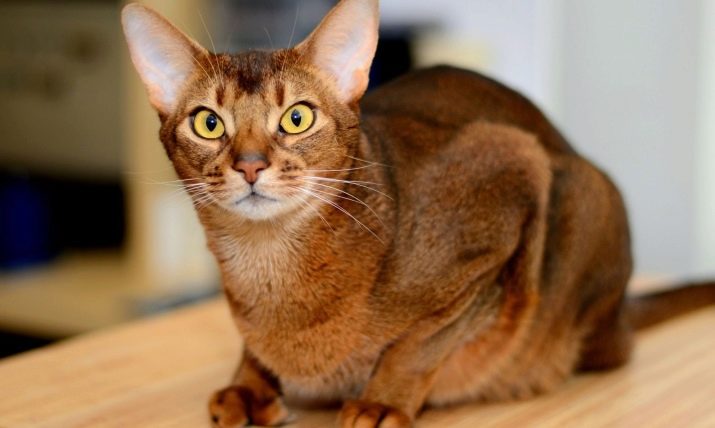
In total, four types of color are recognized.
- Wild. Classic color, until 1963 was considered the only one recognized. The most common is a double or triple tick, without a specific pattern, in shades of ocher, dark brown or black. Black marks are only on the muzzle and tip of the tail. The downy hair that forms the undercoat is orange. The inner surface of the legs and lower abdomen in color do not conflict with others.
- Sorrel. Staining varies from reddish brown to copper red. May have the color of cinnamon or apricot. The root hair root is red. The color on the inner surface of the legs and stomach is in harmony with the main one. On the muzzle and tail, chocolate-brown zones are clearly visible. The dark fringing of the nose is almost invisible, the paw pads are dark pink.
- Blue. From above, from head to tail, the wool is painted in pleasant gray-blue tones, turning into a steel shade. Abdomen, paws inside and undercoat - warm pink-beige, apricot hue. The tail is bluish, the nose is brick red with a blue trim. Slate marks stand out on the muzzle and tail.
- Faun. The tone of the color of cocoa is a light brown shade with a pinkish coating, similar to coffee with milk. The nose of the nose is the color of a faded rose, with a purple trim. It is rare due to recessive genes.
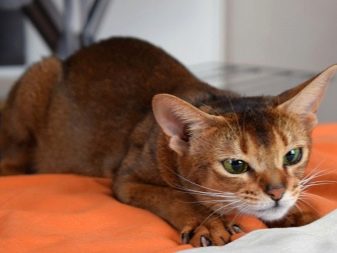
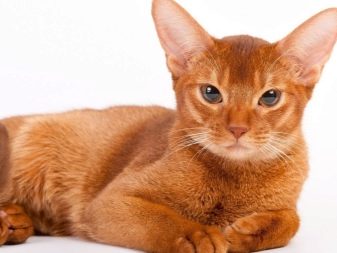
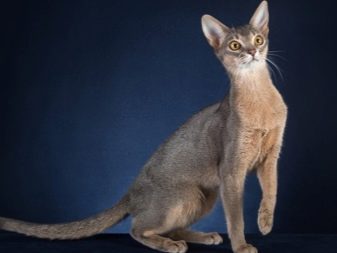
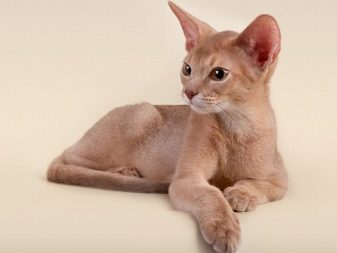
Only in Europe are Abyssinian cats of silver and tortoiseshell colors bred from purebred prize-winning cats allowed for exhibitions.
Content
These beautiful animals live in small apartments and in country houses, but the temperature in the room is maintained at + 23 ° C and above, because short hair and light undercoat do not warm well. Indoor plants are cleaned away, a bouncing cat blows them. It is advisable to give him a corner with a game complex, a house and scratching posts. Without these amenities, the pet will have fun with furniture and shelves.
- Provide a safe space by putting all wires in special boxes. Attach sockets and switches so that they do not fall out of the sockets. Place all breakable objects, small household appliances, gadgets and small objects away from the edge so that the kitten is not injured.Close the windows, windows and balcony doors.

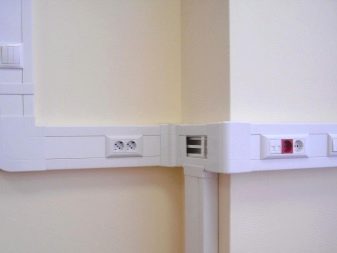
- For a visit to the veterinarian or travel, get a carry. And for walks on the street - a collar on which to strengthen a business card with the name of the pet and the coordinates of the owners. If the pet slipped out of the house, this will help to return him. The nature of this breed allows you to walk with it on the street or travel, so from a young age cats are taught to harness.
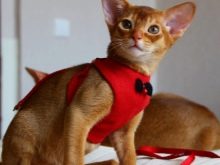
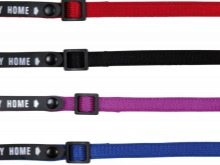
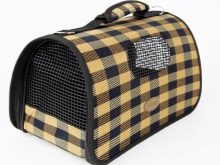
- Get wide dishes for food and drink, ceramic or metalto turn over heavily.
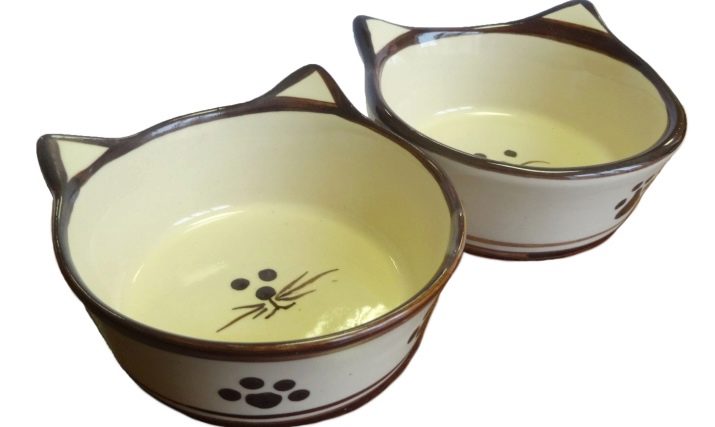
- Buy toysso that in the absence of owners the cat had something to do.
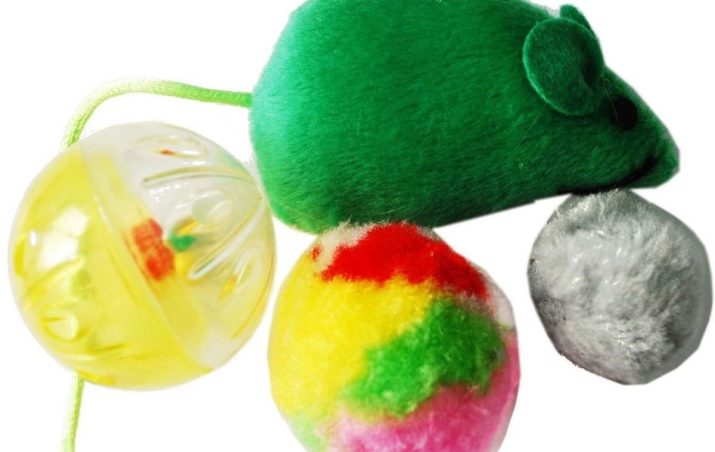
- Wool does not require special attention. Comb it with a special metal brush once a week. Cats do not molt too abundantly, but during this period it is better to comb out more often, collecting the fallen wool with a rubber glove.
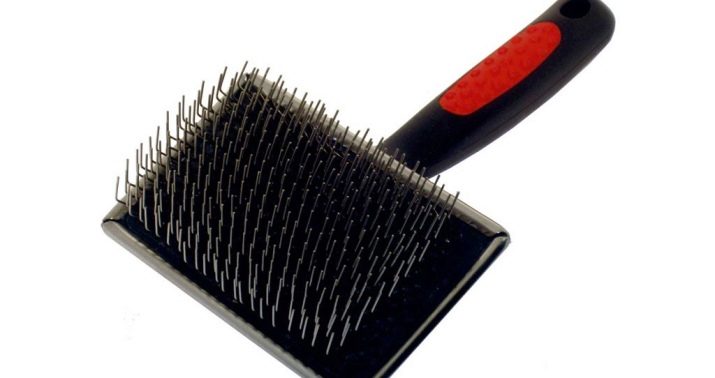
- Abyssinians are very easily accustomed to the toiletare clean, therefore it is convenient and economical to use wood sawdust or small granules.
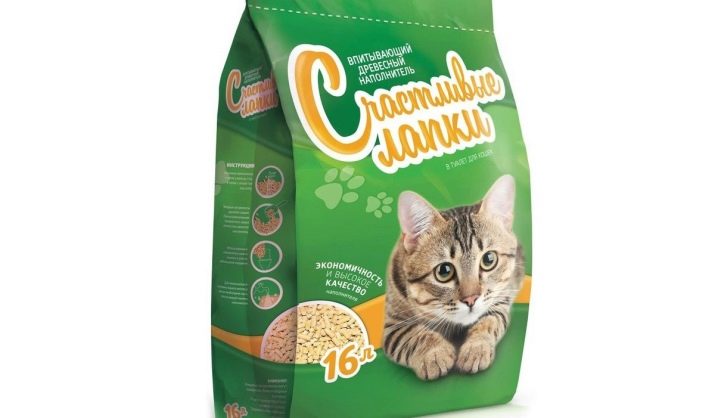
- Periodically trim the claws with a special prunerif the cats do not walk on the street, and do not sharpen them on a scratching post. Cut off only the tip, far from the base.

- Check your ears. If there are secretions, remove them with cotton buds, and treat them every 2 weeks with a napkin soaked in warm boiled water.
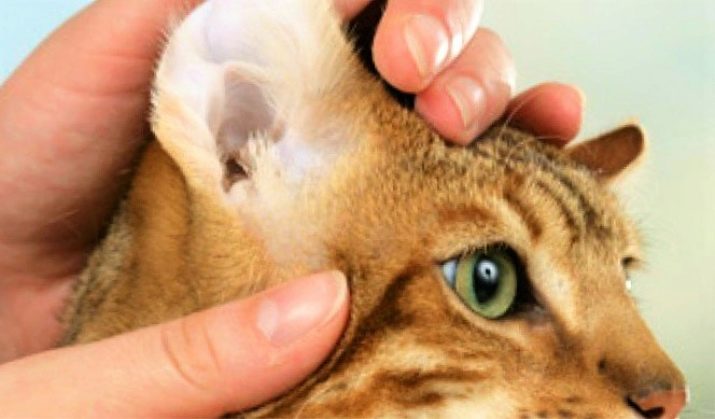
- It’s worth bathing once a monthusing special makeup for shorthair cats.
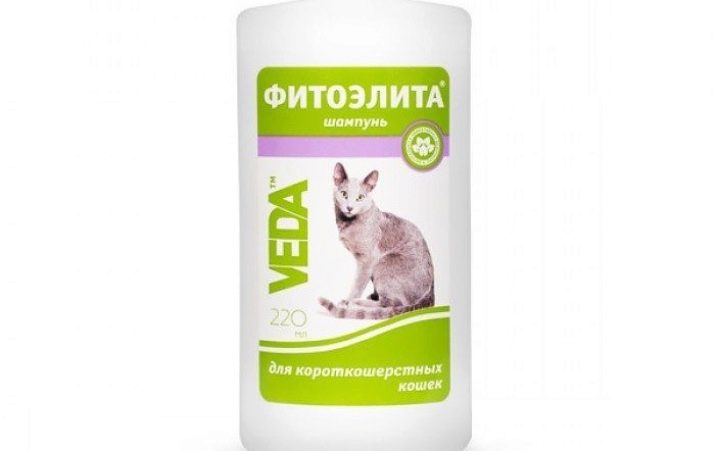
- Abyssinians’s gums are prone to inflammation; special attention should be paid to this and prophylactically brushing their teeth.. Plaque is cleaned once a week with a cat brush with soft bristles and special paste.
Buy your pet special sticks for extra toothbrushing.
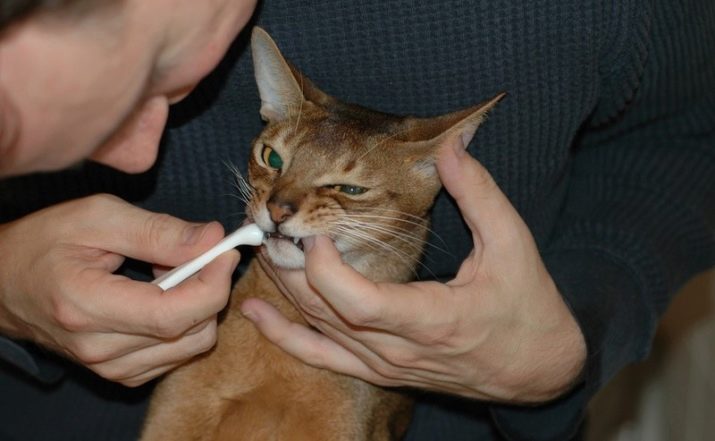
- Carry the animal on time for vaccinations and do deworming.
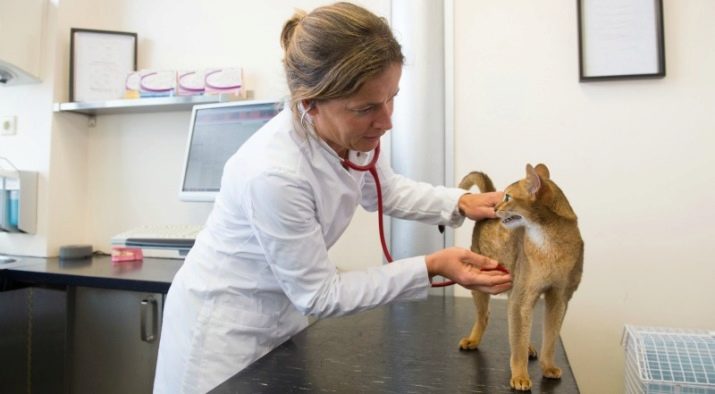
Food
This breed is not prone to gluttony, overeating or obesity. The quality of the food is important. Abyssinians can be fed with both dry, canned and natural products. Some breeders recommend a factory ration balanced with vitamins and minerals, and dry granules also cleanse teeth.
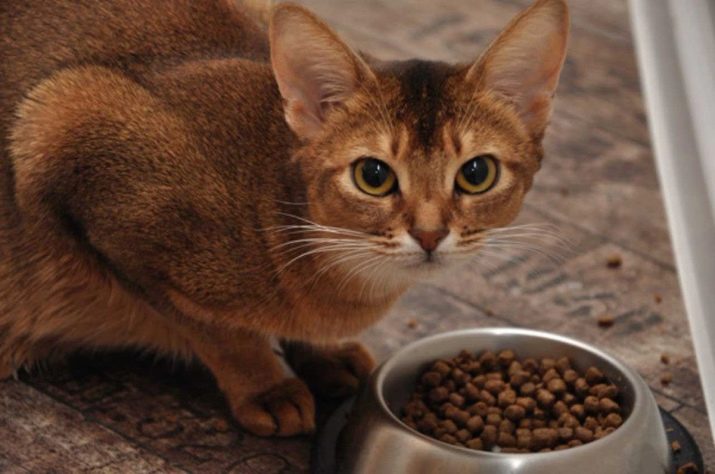
Pastes and various tasty pieces are not very good. Soft food stays between teeth longer and causes gum problems. Dry food is chosen by age, it should be with a lot of protein and dietary supplements. Consider several other nutritional rules.
- When using fresh products, boiled, raw or frozen meat is introduced into the menu. The norm for an adult is 120 grams, for a kitten - 30 grams.
- Small kittens eat 4 times a day, small portions. In the year they switch to three meals a day, and a half - two meals a day.
- Chicken breasts and turkey are given daily, beef and veal - three times a week. Pork, lamb and duck are completely excluded.
- Sour-milk products are fed every day.
- Vegetables and porridge alternate, mixing with meat.
- Boiled sea fish, egg yolks, beef liver, chicken hearts are given twice a week.
- Among the Abyssinians are vegetarians who love raw vegetables and fruits. Without fear, give them fresh apples, carrots, melon, cauliflower and cucumbers.
- After a day, bioadditives are added to the food and ½ teaspoon of olive or sunflower oil.
- Water is changed 2 times a day, but they like to drink from the tap.
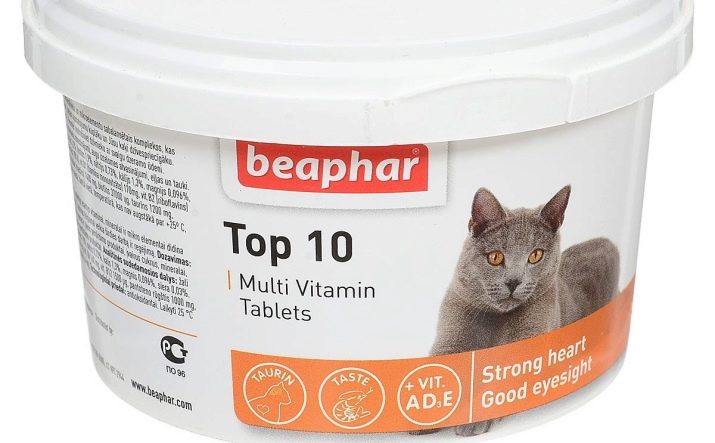

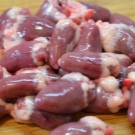
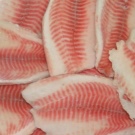
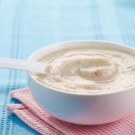
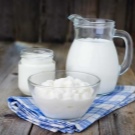
River fish, beef kidneys, pork, sausage and all similar products, salted cheese, sweets and some fruits, sour cream and cream, egg white are strictly contraindicated.
When choosing one type of food, for example, natural food, canned food or dry elite food, you can not mix it with another type of food.
This breed of gourmet cat. If they do not eat food for 10 minutes, then they do not like it, and it is worth finding another.

Breeding
It is advisable to look for a partner when the cat is 1-1.5 years old. Up to 9 months of age, mating is categorically not recommended, although puberty comes at 4 months. When cats begin their first estrus, ignore the calls and purrs of the "bride."These rules apply to the "groom", and are international standards.
The main peak of sexual activity is autumn-spring. In the offseason, both sexes are especially temperamental. Only choose a purebred groom, one species and one color, as he generates the breed. It is impossible for Abyssinians to predict what color the baby will appear, since it is determined by the genes of the parents.
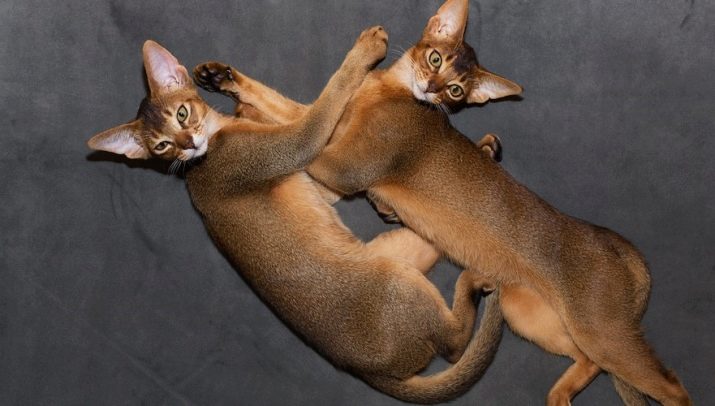
The feast of conception is celebrated on the territory of the boy. It is important that the “honey” period lasts several days. Even if the cat is inexperienced, the male is able to fertilize her. Care must be taken when mating a kitten with a newcomer, the meeting may not achieve the desired result.

The female may not allow the cat if it is young or not ready for intercourse for the first time. Sometimes a lady is larger than a male, which leads to the same result as the boy’s insecurity, due to his youth and inexperience. The stress caused by moving to the newlywed's territory can also nullify all efforts. It is necessary to grab a cat’s personal belongings in order to level it. If the couple is experienced enough, mating will take place within a day.

When the time comes for parting, they will show it with their behavior.
Previously, both animals take water procedures. Particular attention is paid to health, the absence of worms. 24-48 hours after the first sexual intercourse, the eggs are fertilized. Conception time is counted from the second day after mating. Nipples swell and turn bright pink on days 20-30. Expectant mother eats and sleeps more.
Pregnancy lasts about 2 months, ranges from 63-65 days. Often it depends on the genes. Multiplicity is also transmitted. Sometimes in the first weeks the cat suffers from nausea. The abdomen increases at 5-6 weeks, and the embryos take the form of cylinders and descend into the retroperitoneal space. Now the lady is in an interesting position, and it is impossible to palpate her. After 40 days, the cylinders increase to 6-7 centimeters.
Appetite decreases, which depends on the size of the fetus. On day 50, the movement of the cubs in the tummy is visible. A harbinger of childbirth are sticky discharge from the labia. The uterus opens and liquefies a cork that cleanses the vagina. Sensing the approach of permission from the burden, the cat is looking for a nest, excited and often runs to the toilet.
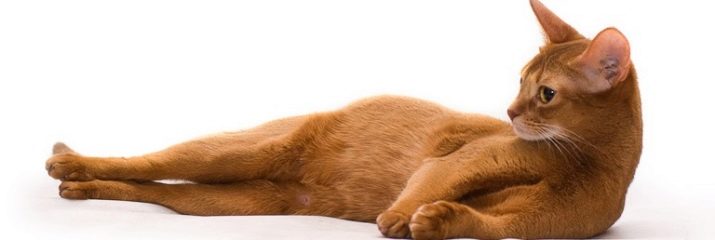
Bearing offspring, she needs increased attention, care and affection. The abyssinian has a very developed maternal instinct - she herself can feed her offspring without human help. The maximum number of offspring is 6.
The resolution of the burden of kittens is in 3 stages.
- The uterus opens and the fetus assumes a position to exit the cervix. Lasts 1-10 hours.
- The second stage - periodically repeated contractions, in the amplitude of muscle contraction. The uterus is already open enough.
- After the neck is fully opened, attempts are resumed, alternating with contractions and pushing the baby, depending on its size, for 3-4 attempts. The kid can go head first or feet forward. After its appearance, the umbilical cord stretches and a child's place, which does not come out immediately.
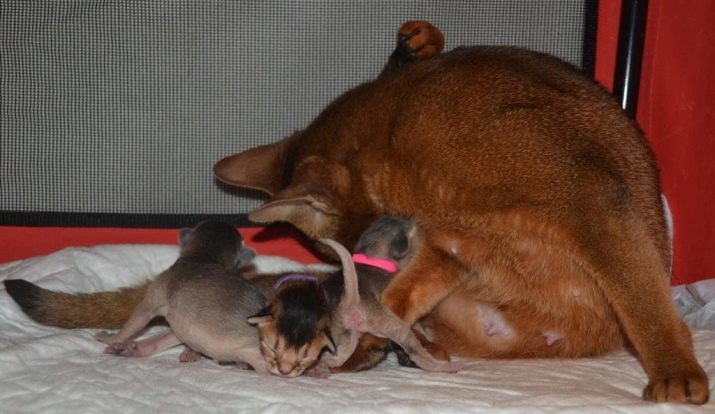
Without waiting for it, you can cut the umbilical cord closer to the loop. Next, we clean the baby’s airways, easily shaking it down with his head to push the fluid out of the lungs. When the newborn breathes evenly, we cut off the umbilical cord, leaving 1.5-2 cm, and treat it with brilliant green. We apply to the mother.
If the baby is healthy, within half an hour he will begin to suck mother’s milk. The next fruit comes out in a short space. Subsequent kittens appear after 1.5 or even 3 hours. Active sucking of mother's milk stimulates the uterus, and the birth process is accelerated.
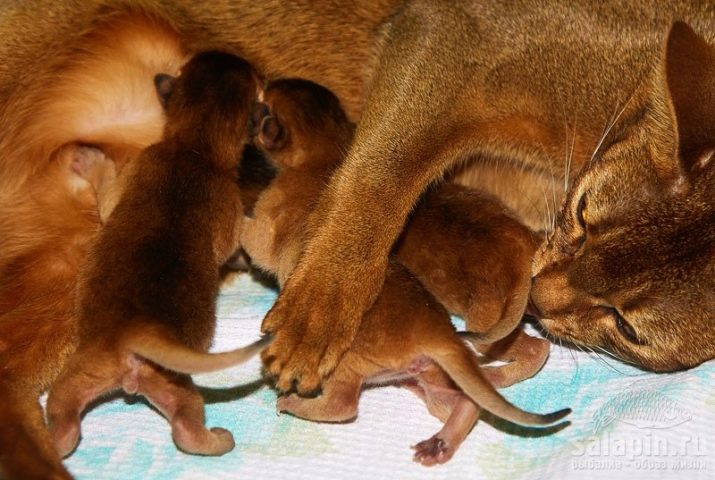
Before giving birth, be sure to prepare everything you need for obstetric care. These are disposable diapers 60x60 cm, a pair of rounded scissors, zelenka, disks and sticks of cotton wool, a medical solution for disinfecting hands and scissors, several insulin syringes to anesthetize a woman in labor.
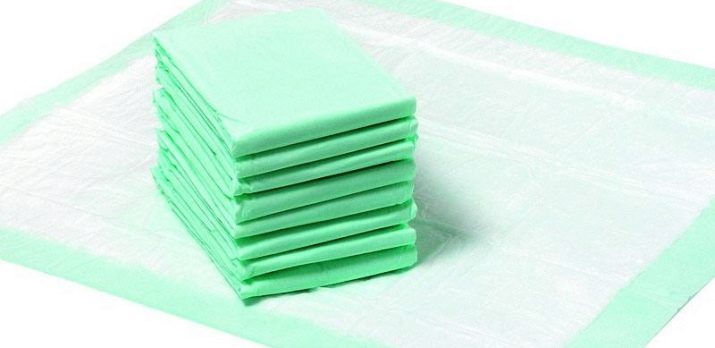
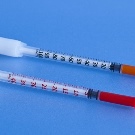

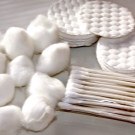
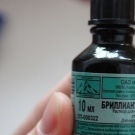
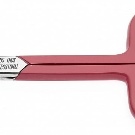
Health
On average, Abyssinians live 15-20 years with proper care, rarely get sick, but the risk of genetic disorders is not ruled out.
- Retinal damage leading to blindness is retinal atrophic retinopathy. Fortunately, this happens in pets aged. The cat refuses to go into unlit places, does not want to climb and go down the stairs.
- Genetic amyloidosis. With it, metabolic processes and the work of the immune system are disrupted. The first symptoms are thirst, weight loss, unusually frequent urination, vomiting, and persistent dental problems.
- Displacement of the patella and hip dislocation may occur due to trauma in adulthood or be genetic.
- There is dermatitis, not transmitted by inheritance. This is a neurological disease caused by stress and constant licking, up to the loss of hair.
- An allergic reaction to certain foods, plant pollen, or household materials. Manifested by itching and rash.
- Gums become inflamed due to malnutrition, gingivitis occurs. For prevention, proper feeding and dental care is necessary.
- All abi are susceptible to leukemia, but this incurable disease is prevented by vaccination.
- When overeating, problems with the stool are possible.
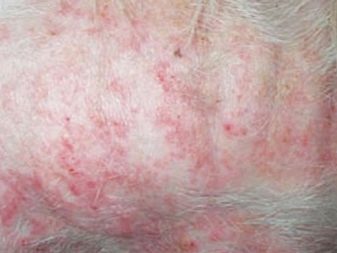
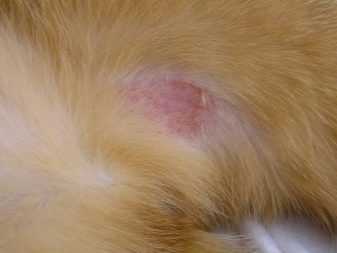
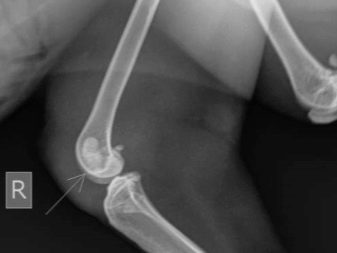
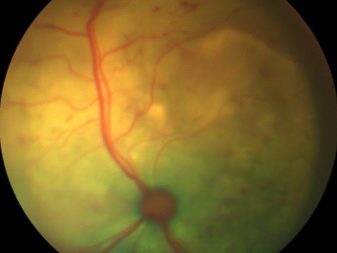
The first vaccinations are given to kittens in 9-11 months, it is impossible before, teeth change occurs. Further - annually. They are vaccinated against panleukopenia, herpes virus infection, calicivirus, chlamydia, leukemia, immunodeficiency, viral peritonitis, dermatomycosis and rabies.

All vaccinations must be done, even if the pet does not exist on the street.
List of the best names.
For beautiful Abyssinian girls and boys, oriental nicknames appropriate to the breed, origin, and personifying a sign feature are suitable.
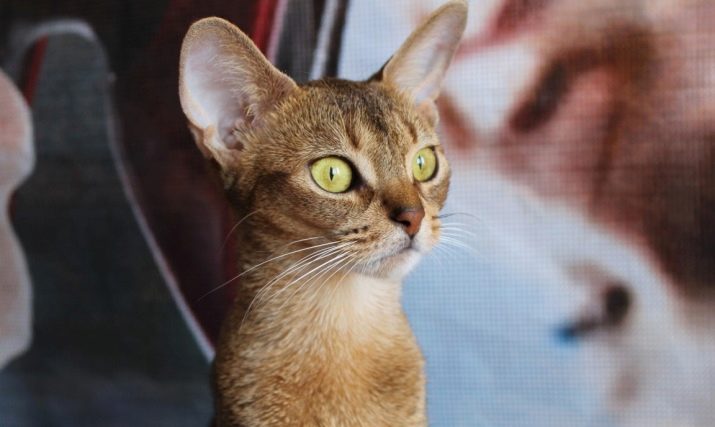
If you get a cat in a kennel, they usually offer nickname options. But you can choose the names yourself. Let us dwell on beautiful and interesting nicknames for boys, which are arranged in alphabetical order for convenience:
- Amethyst, Akella, Asher, Alf, Altares;
- Benji, Bruce, Barney, Boniface, Velvet;
- Vincent, Wagner, Willis;
- Hamilton, Hamlet, Hector, Hermes, Goliath, Gabrielle, Gold;
- Dinar, Dylan, Dorian, Damir, Denny, Duke, Joy;
- Jacques, Jules, Jean, Joseph;
- Zarif, Zeus, Siegfried, Zephyr;
- Irbis, Ingvar, Irwin;
- Caliph, Christopher, Quentin, Christian;
- Lucky, Linus, Lloyd, Lucas, Laurent;
- Maximilian, Maxwell, Manfred, Mickey;
- Notty, Noel, Nelson, Norton;
- Olaf, Olris, Ortan;
- Ralph, Raj, Robin, Roger;
- Cedric, Stanley, Sandy, Simon;
- Tristan, Thomas, Tom, Troy;
- Will, Olaf, Winston;
- Felix, Frank, Freddy;
- Hugh, Harris, Haight;
- Caesar, Tsang;
- Chester, Chain, Chasey;
- Sheridan, Sherry, Shorty;
- Edgar, Edmond, Eric, Andy;
- Eugene, Jung, Julian;
- Janson, Jaffa.
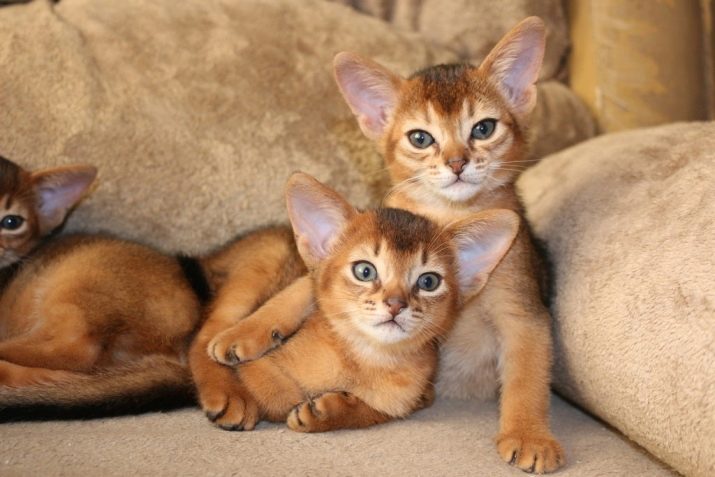
For girls, choose gentle names:
- Augustine, Adele, Akira, Annabelle, Abigel, Alicia;
- Beatrice, Bast, Bianca, Bela;
- Vivienne, Wendy, Violet, Valerie;
- Gwendolyn, Gloria, Henrietta;
- Jersey, Jenny, Judy, Diana, Julia, Daniel, Dakota;
- Josephine, Jasmine;
- Zaur, Zara, Zeya;
- Isis, Iheth, Isabel, Inessa, Ilsa;
- Claudia, Cassandra, Kimberly, Calypso, Clarissa, Christy, Carol;
- Lavender, Lucy, Laura, Lilian, Leila;
- Matilda, Madeleine, Michaela, Peace, Magdalene;
- Nick, Naomi, Nicole, Nubia, Nancy, Noah, Naya;
- Audrey, Olivia, Ornella, Ora, Ophelia;
- Paulina, Penelope, Priscilla;
- Rachel, Rachel, Rosemary, Roxy, Ruth;
- Stephanie, Sandra, Sapphire, Simon, Celia;
- Tara, Talia, Tana, Tahira, Teya;
- Ulla, Ulana, Ulsey, Ulfi;
- Felicia, Firyuza, Florence, Frida;
- Hanni, Chloe, Hilda, Holly;
- Caesarea, Tsarella, Circe;
- Chelsea, Celeste;
- Shelley, Charlotte, Sherry;
- Esmeralda, Ellie;
- Julissa, Judit;
- Janika, Janetta.
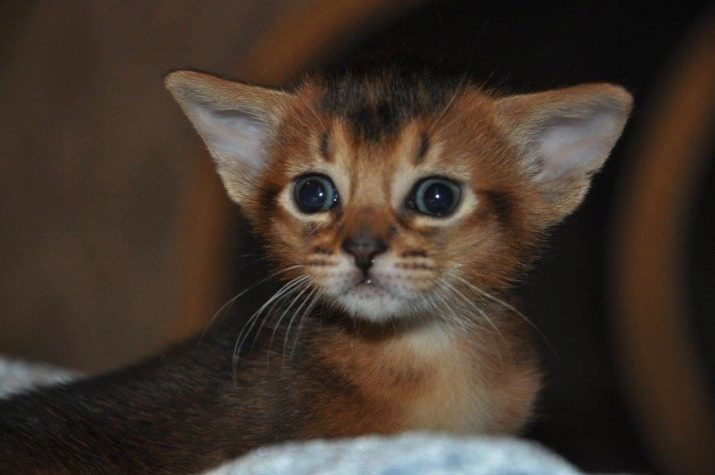
Owner reviews
Owners of cats and cats of the Abyssinian breed are very pleased with their choice. They note the independent and proud character of the pet, grace, learning ability, curiosity. Such cats become family members, companions in walks and travels. They can be trained like dogs, understanding and fulfilling the “impossible” command. Very affectionate, love attention and care.
Pretty neat, do not mind water procedures. Some specimens even like to swim. They get used to the tray without any problems. Many owners characterize them as food picks, gourmets who prefer premium canned food.
Some of the individuals do not get along well with other pets, especially birds. Wary of strangers. Very active and jumping, which leads to damage to valuable things. Not vocalists, pleasantly muffled murmur.
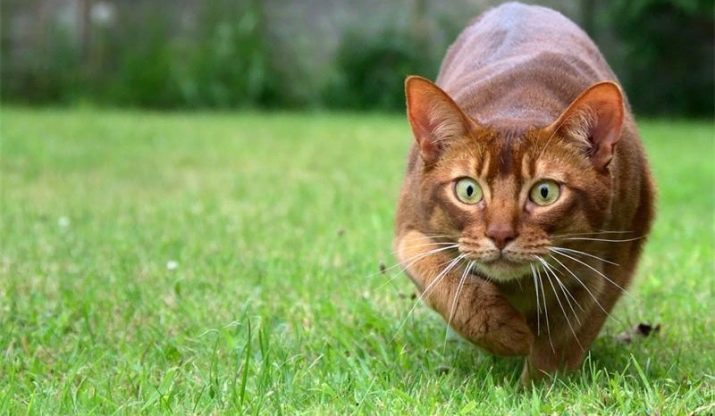
Not quite suitable for keeping in a small apartment, they like space for games. With pleasure jump, chasing a feather or small object, regardless of age.
Description and characteristics of an Abyssinian cat, see the video below.
